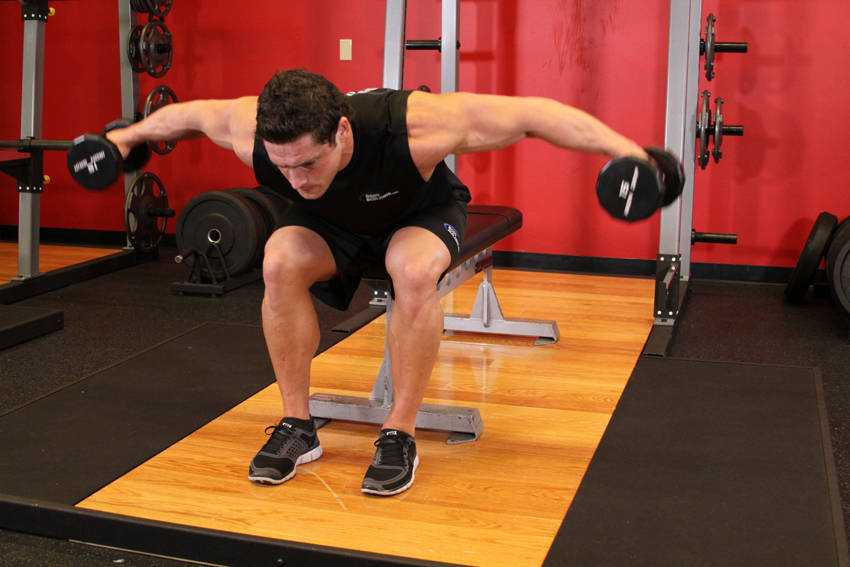Proper Exercise Technique
Bent over lateral raises
Researched and Composed by Vic Goyaram
 |
Pic 1: Doug Brignole shows how it's done. He supinates his wrists instead
of palms down in order to get a better contraction Photo Courtesy: Doug Brignole (Click to visit website) |
It is not difficult to
spot people improperly performing the bent-over lateral raise. A lot of wasted effort can be seen and this is indeed a pity because the bent over dumbbell
lateral raise is one of the best exercises to “toast” the posterior (rear)
deltoid muscles. It goes without saying
that developed rear deltoid is a very important for balanced shoulder
development and is a great contributor to your rear and side view musculature.
Secondly, the bent over
lateral is also a getting increasingly rare as people prefer to work rear
deltoids on the cable crossover low pulley or on the reverse of the pec-deck
machine (Pic 2). This may be fine for advanced
lifters but beginners are advised to perform the bent over dumbbell laterals. Furthermore, I have many times seen beginners
perform cable movements very incorrectly and in the process engage other
muscles rather than rear deltoids, for example, the triceps. When it comes to bent over dumbbell laterals
very often the form goes through the window. I have seen all sorts of improper
versions of this exercise which sometimes resemble two arm bent over dumbbell
rows and even partial deadlifts. This is ridiculous.
 |
| Pic 2: Too many beginners make cable movements a staple their rear delt routine. |
In this article I will
elaborate on the common mistakes that trainees often commit on this exercise and recommendations
to improve your form in order to derive the maximum benefits.
Common mistakes in bent-over laterals:
- Not bending the torso enough to isolate the rear deltoids: It is recommended to keep your torso nearly parallel to the floor (Pic 1) or at a slight incline as you would do on bent-over barbell rows. I know that this may not be practical for some people with lower-back problems. This may be addressed by lying on a flat or low incline bench (Pic 3). In this case, keeping the chest constantly on the pad of the bench also helps eliminate the tendency of moving up the torso as the dumbbells move up. You probably already know that a slight upward swing of your torso as you raise the dumbbells up makes the movement a lot easier. You must not do this. Only the arms must move.
 |
| Pic 3: Keep chest against bench at all times |
I have also tried keeping my forehead against a stationary object like the edge of a bench throughout the set as an indicator that I am not swinging my body up (Pic 4). Sometimes I sit at the end of a bench, bend my torso and keep it firmly against my legs (Pic 5). This variation, however, impedes my breathing so I don’t use it. If you are a girl and have big boobs this position may not be comfortable as well.
 |
| Pic 4: This variation minimises cheating |
 |
| Pic 5: Also a nice position |
- Using too much weight: I blame the use of excessive weight for the reason why people get this exercise wrong. When doing an exercise it definitely helps to always remember its purpose. In the case of the bent over dumbbell laterals the aim is to isolate and work the rear deltoid head which is indeed a small muscle. It does not need excessive weight to grow. You don’t need to take massive dumbbells and perform bent over laterals.
- Bringing up the dumbbells in an incorrect plane: As illustrated in the Pic 6 below, the dumbbells and the deltoids should be in a straight line. Lifting the dumbbells too far to the rear is the most common mistake. Use a weight that will allow you to raise the dumbbells in the correct plane. Imagine you are a bird flapping your wings.



















0 comments:
Post a Comment